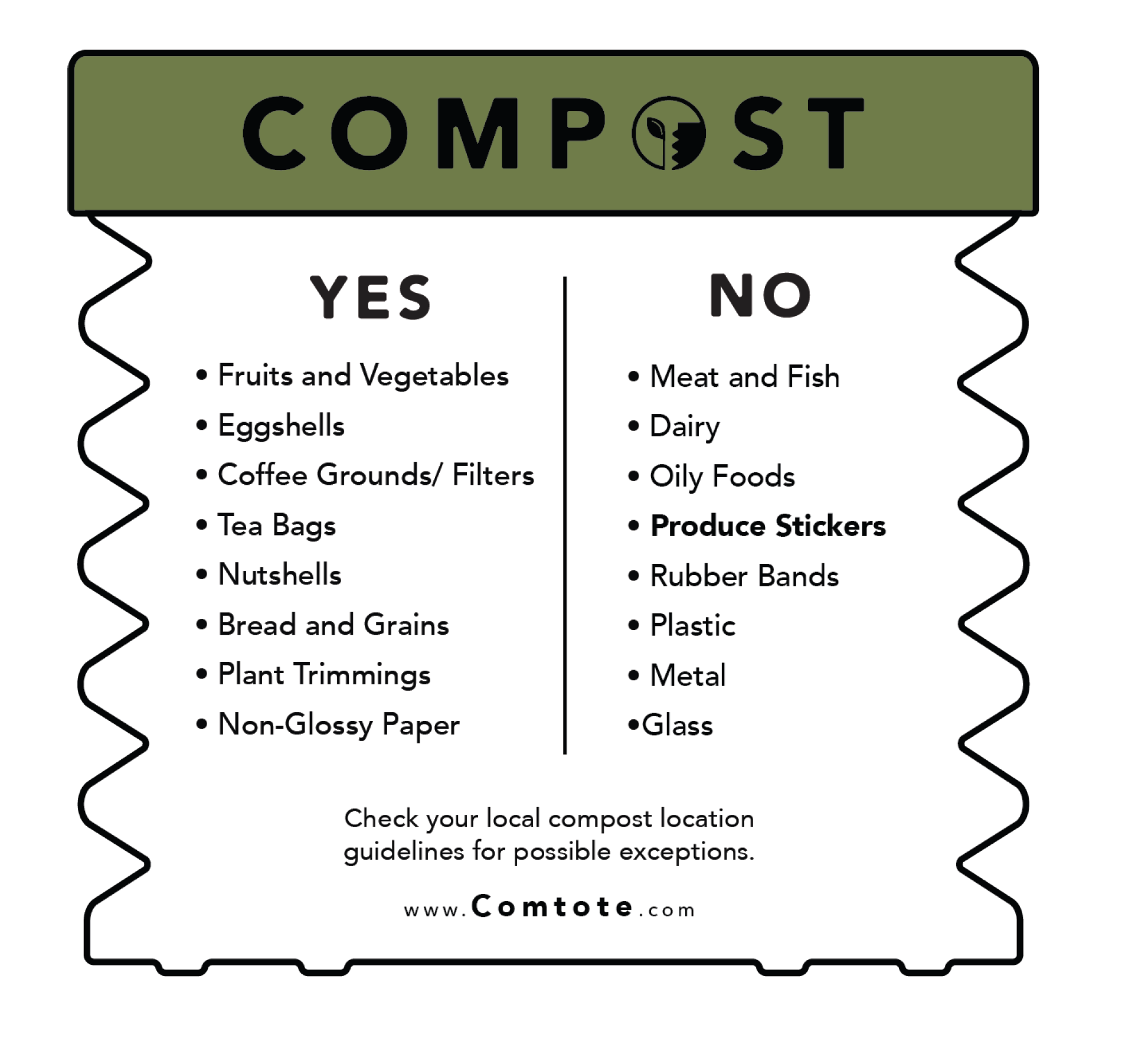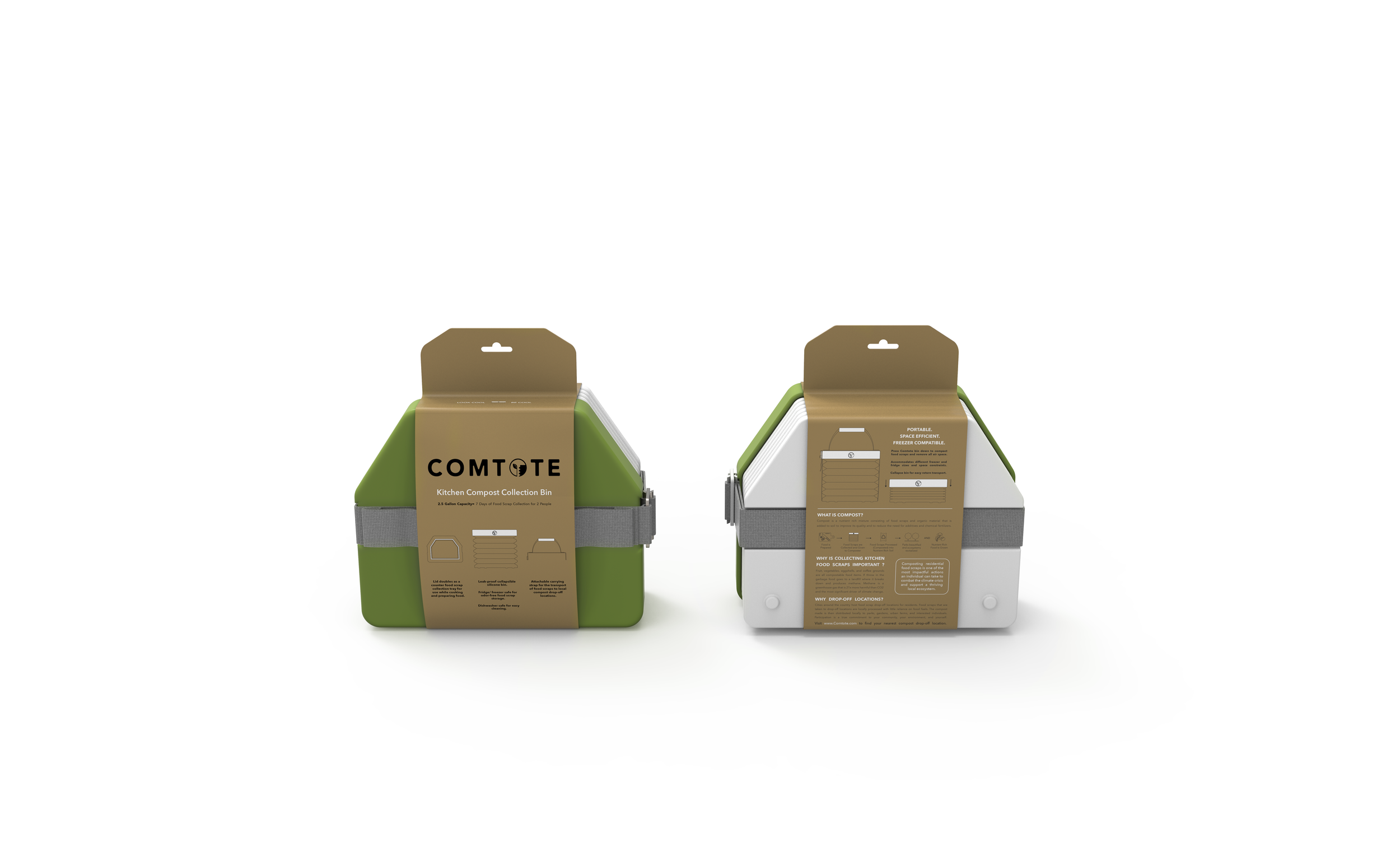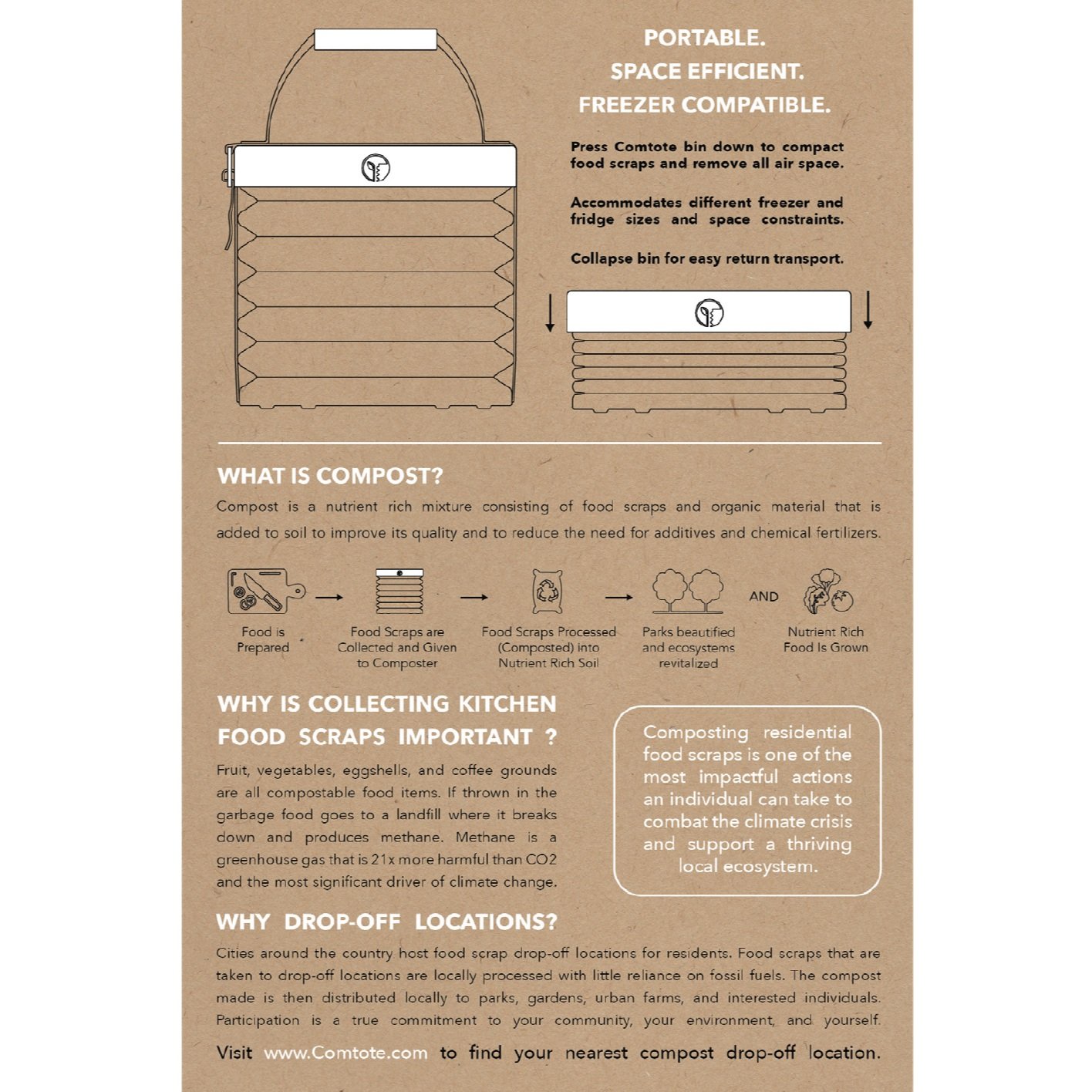
COMTOTE│Kitchen Food Scrap Collection Bin
Awards: Winner of the Sustainable Vision Award, Parsons New School of Design
Techniques: Rendering, 3D Modeling, Consumer Research, Packaging Design
Date: Spring 2022
Personal Project
Objective: Design a portable kitchen food scrap collection solution that makes composting easier, more efficient, and more appealing for urban dwellers. The product aims to streamline food scrap storage and transportation, encouraging participation in local composting programs.
Description: Comtote is a sleek, compressible kitchen bin designed to make food scrap collection both convenient and odor-free. Made from flexible silicone, the bin fits easily into any freezer, allowing users to store food scraps without the smell. Its innovative compressible design maximizes storage space, encouraging more food scraps to be collected for composting. The modern aesthetic and functionality of Comtote aim to shift the perception of composting from something undesirable to a valuable, sustainable practice. Comtote is an accessible solution that helps individuals participate in local composting programs and promotes a more sustainable, healthy community.

Comtote is designed to fit the dimensions of a standard freezer. It can also be stored in the refrigerator or on the countertop with the lid on to create a tight, secure seal.

The lid can be used as a countertop collection tray while preparing food. The food scraps in the tray can then be transferred into the collapsible bin in the freezer.

The adjustable carrying strap is used to transport Comtote to the nearest Drop-Off Location. Comtote is a reusable solution that eliminates all waste from the composting process. This way compost collectors can spend less time sifting out plastic and more time making soil for the community.

Comtote is collapsible for return-transport so that it is smaller to carry or can be easily slipped into a tote bag or backpack. This allows someone to easily carry the container with them if they are not returning directly home after they drop of their food scraps.

Included with the package is a refrigerator magnet that has a universal guide for what is compostable. The magnet is easy to refer to on the fridge.

Printed on the magnet is a simple yes / no list that is not confusing nor overwhelming. The rule of thumb is that something can be composted if it was grown in the soil.

Comtote comes in four different colorways that maintain cohesion as a collection. The combinations are made to look contemporary and fresh while considering its place in the kitchen and as a carrying accessory.

Comtote is packaged in a kraft sleeve with black and white printing. The package has no laminates or full color bleeds making it completely compostable.


What is Compost
Compost is a nutrient-rich mixture consisting of food scraps and organic material that is added to soil to improve its quality and reduce the need for additives and chemical fertilizers.
In compost piles, food scraps and other organic material decompose aerobically (with oxygen) as microorganisms take in oxygen to break down organic material and release heat that gets trapped in the compost pile. This sustainable and eco-friendly process results in a highly nutritious soil amendment.
Everyone can (and should) participate in composting. Composting residential food scraps is one of the most impactful actions an individual can take to personally combat the climate crisis and support a thriving local ecosystem.
Why Compost
Reduces CO₂ Emissions and Lessens Landfill Waste
Food waste in landfills does not fully decompose. Landfills are designed for storage, not decomposition.
Buried under layers of waste without oxygen, light, or moisture, food can take decades to break down. For example, a head of lettuce takes 25 years to decompose in a landfill, compared to just 4 weeks in a compost pile.
Organic waste makes up about 40% of landfill material. As landfill space becomes scarce, composting helps reduce waste volume while producing valuable, nutrient-rich compost.
Restores and Enriches Soil Health
Compost improves soil structure by enhancing air circulation in dense soils and increasing water retention in sandy soils, reducing the need for frequent watering.
Compost is rich in essential nutrients like nitrogen, phosphorus, and potassium and contains important trace elements like calcium, magnesium, iron, and zinc.
Adding compost helps balance soil pH, preventing soil from becoming too acidic or alkaline.
Compost supports reforestation, wetlands restoration, and habitat revitalization by improving contaminated, compacted, or degraded soils. It also boosts crop yields in agricultural settings.
Reduces Dependence on Chemical Fertilizers and Prevents Toxic Runoff
Overuse of chemical fertilizers harms human health, wildlife, and ecosystems, contaminating water supplies and polluting natural habitats.
Compost offers a sustainable alternative to chemical fertilizers, improving soil health naturally and preventing toxic runoff into rivers, lakes, and oceans.
When buried in landfills, organic waste can react with metals to produce toxic leachate, a hazardous liquid that pollutes groundwater. Composting eliminates this risk.
Advances Environmental Justice
Landfills and waste facilities are often located in marginalized communities, exposing residents to harmful pollutants.
Composting food scraps reduces waste and pollution, creating cleaner, healthier environments for these communities.
Expanding composting programs supports environmental justice by helping reduce environmental toxicity and supporting community well-being.
Local Food Scrap Drop- Off Locations
Cities across the country provide food scrap drop-off locations for residents to compost their organic waste. In NYC alone, there are over 170 sites open year-round. The process is simple—collect food scraps at home and drop them off at the nearest location. Many of these sites are conveniently located near farmer’s markets, and some even offer free or low-cost compost to those who contribute.
Incorporating food scrap drop-off into your weekly routine is an easy and effective way to support composting efforts. VisitingGrow NYC’s website allows residents to find their nearest drop-off site and check operating hours.
Through research, it’s clear that in urban areas, local drop-off locations have the most potential to engage individuals in composting. These sites are accessible, require minimal effort, and provide significant benefits to local communities. However, for compost drop-off programs to expand, there must be an increase in participation and long-term commitment to the existing programs. Greater involvement will drive the development of additional drop-off sites and further support composting initiatives.
Storing food Scraps in the Freezer
If you are unable to get to your drop-off location frequently, storing food scraps in your fridge or freezer is a great way to prevent your food scraps from smelling. By putting scraps in the freezer you are preventing decomposition, eliminating any associated odors that may occur.







